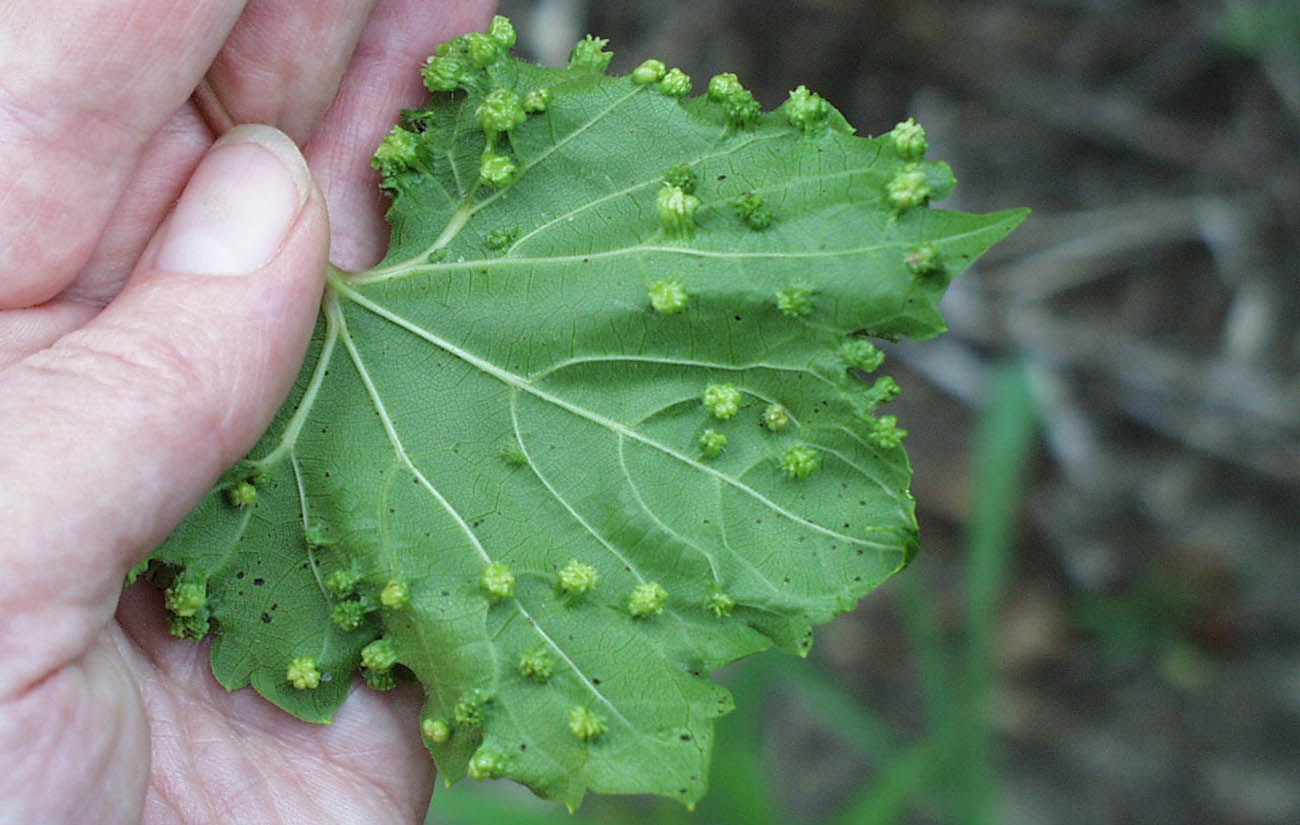Phylloxera is an aphid-like insect that is native to the Eastern US. It has two distinct life forms: the root form, which feeds on the roots, can stunt growth and eventually lead to vine death. The foliar form of the insect causes galls on vine leaves (Figure 1) and is overall less concerning. The root form of the insect is not a concern to most growers in Indiana because the roots of French-American hybrid grape varieties are resistant to the harmful effects. In fact, it is rootstock from American varieties that is used in Europe and other parts of the country to combat the harmful effects of this insect in Vitis vinifera plantings, which are extremely susceptible. The remainder of this article will focus on the foliar form of phylloxera.

Figure 1. Galls on underside of grapevine leaf, photo from North Dakota State University
Lifecycle
Phylloxera survives the winter as an egg commonly found under grapevine bark. In the spring, asexual, wingless forms of the insect hatch and crawl onto new leaves and shoot growth. These young crawlers settle on newly developed leaves and form galls on the under surface of the leaves. A mature female will lay eggs within a gall, and newly hatched nymphs will crawl to new growth, settle on leaves and form new galls (Figure 2). They can generate 40-50 galls per leaf. Several generations may occur each season, commonly along the same shoot. Some varieties are more susceptible than others.
Signs & Symptoms
The telltale sign of a phylloxera infestation is the formation of galls on leaves (Figure 1). If leaves become heavily infested, premature defoliation may occur resulting in retarded shoot growth.
Scouting & Management
It is important to monitor the crawlers that hatch from the eggs as this is critical for timing the first insecticide application in early summer. Danitol (pyrethroid) and Movento (systemic) are two of the most common options used to control phylloxera. Only one spray may be required, but if additional gall formation is present, alternate modes of action to prevent fungicide resistance. More information and options can be found in the Midwest Fruit Pest Management Guide.
Resources:
Practical Tips for Managing Grapevine Phylloxera
Grape Phylloxera | Buckeye Appellation Blog
Grape Phylloxera on Cold-Hardy Wine Grapes: A Review of Pest Biology, Damage, and Management Practices
